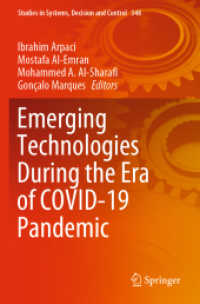- ホーム
- > 洋書
- > ドイツ書
- > Humanities, Arts & Music
- > Religion & Theology
- > judaism
Full Description
This book offers an examination of an expanding set of options for being Jewish in contemporary American society. It examines the evolution of Jewish identity across five epochs of Jewish civilization as well as the transformation of the American Jewish experience across four centuries.

![Darich FLUFFY BAG BOOK PINK ver. [バラエティ]](../images/goods/ar2/web/imgdata2/42990/4299058607.jpg)






